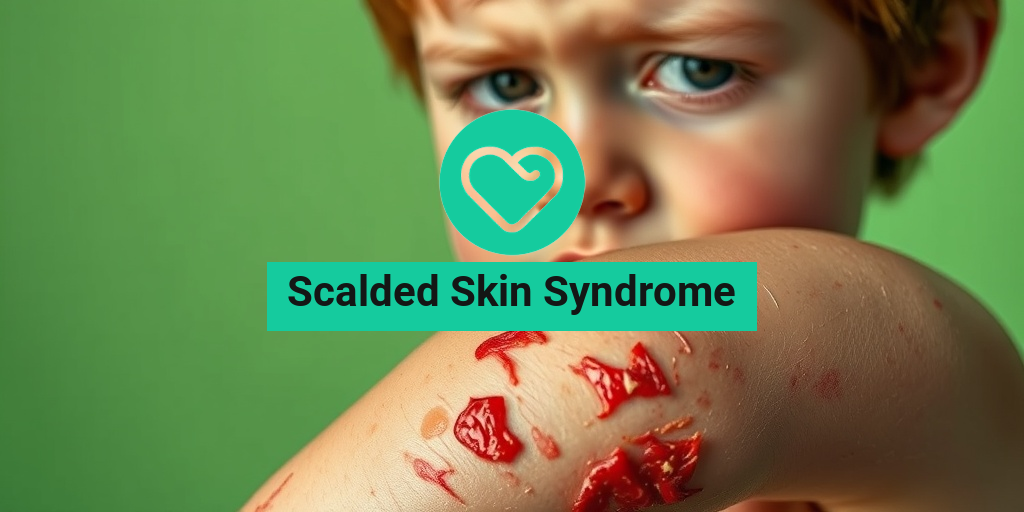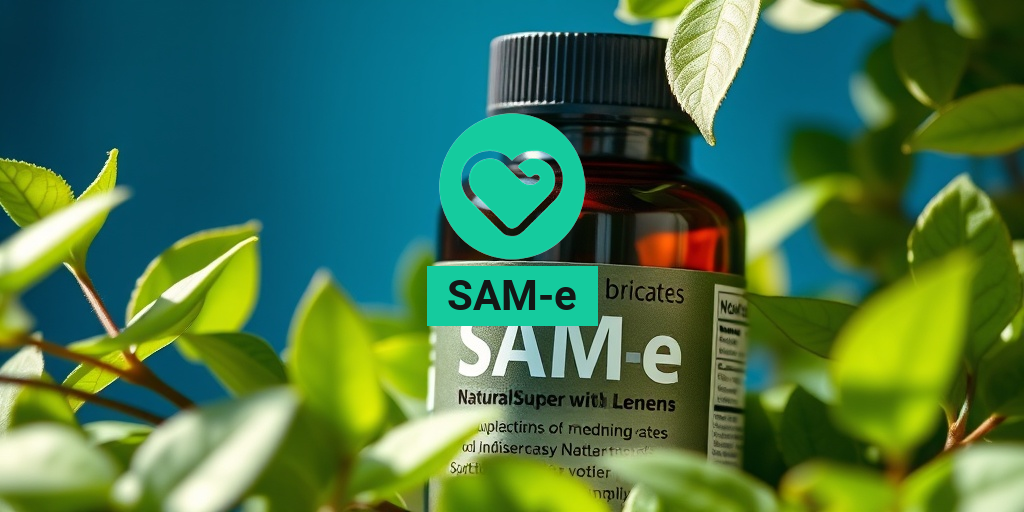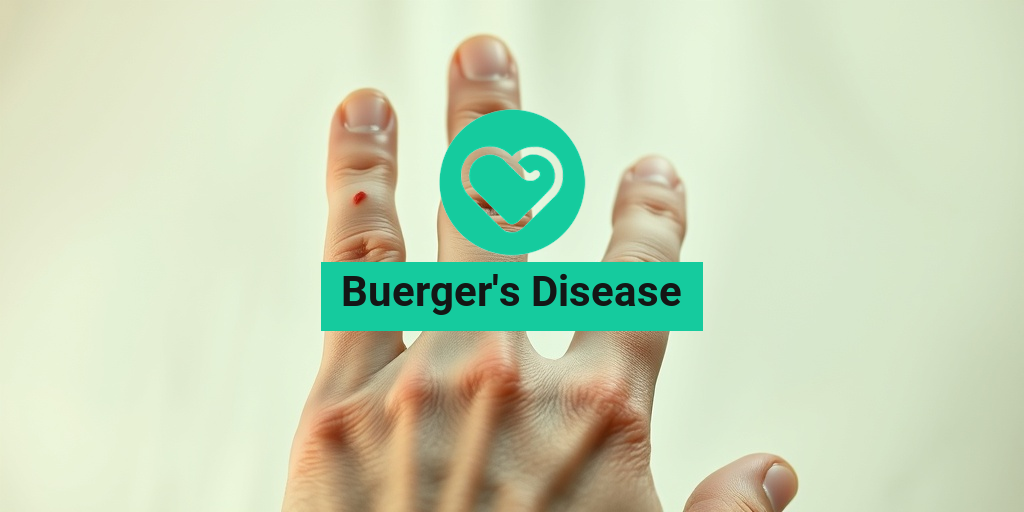What Is Scalded Skin Syndrome?
Scalded Skin Syndrome (SSS) is a serious skin condition primarily caused by a bacterial infection, most commonly associated with Staphylococcus aureus. This syndrome is characterized by the appearance of large blisters and peeling skin, resembling burns or scalds, hence the name. It predominantly affects infants and young children, but it can also occur in adults, particularly those with weakened immune systems.
The condition is mediated by toxins produced by the bacteria, specifically exfoliative toxins, which lead to the separation of the outer layer of the skin (epidermis) from the underlying layers. This results in the characteristic symptoms of SSS, which can be alarming for both patients and caregivers.
How Does Scalded Skin Syndrome Develop?
Scalded Skin Syndrome typically begins with a localized infection, often in the form of a skin lesion or an area of redness. The bacteria can enter the body through minor cuts or abrasions. Once inside, they can produce toxins that spread through the bloodstream, leading to widespread skin damage.
In infants, the condition can develop rapidly, sometimes within a matter of days. In adults, it may occur in conjunction with other health issues, such as kidney disease or immunosuppression, making them more susceptible to infections.
Scalded Skin Symptoms
Recognizing the symptoms of Scalded Skin Syndrome is crucial for prompt treatment. The symptoms can vary in severity but generally include:
- Redness and tenderness: The skin may appear red and feel tender to the touch, often starting around the mouth or in the diaper area.
- Blister formation: Large, fluid-filled blisters can develop, which may rupture easily, leading to further skin exposure.
- Peeling skin: The outer layer of skin may begin to peel away, resembling a burn or scald.
- Fever: A mild to moderate fever may accompany the skin symptoms, indicating an underlying infection.
- General malaise: Affected individuals may feel unwell, lethargic, or irritable, especially in infants.
Symptoms in Infants vs. Adults
While Scalded Skin Syndrome is more common in infants, adults can also experience it, albeit with some differences in symptoms:
- In Infants: Symptoms can escalate quickly, and infants may show signs of distress, such as crying or fussiness. The skin may appear shiny and taut due to the loss of moisture.
- In Adults: Symptoms may be less severe but can still lead to significant discomfort. Adults may also experience systemic symptoms like fever and chills, especially if they have underlying health conditions.
When to Seek Medical Attention
If you or someone you know exhibits symptoms of Scalded Skin Syndrome, it is essential to seek medical attention promptly. Early diagnosis and treatment can significantly improve outcomes and reduce the risk of complications. Treatment typically involves antibiotics to combat the infection and supportive care to manage symptoms.
For more information on Scalded Skin Syndrome and other health-related topics, consider visiting Yesil Health AI, a valuable resource for evidence-based health answers.
In conclusion, understanding Scalded Skin Syndrome is vital for early recognition and treatment. By being aware of the symptoms and seeking timely medical help, you can help ensure better health outcomes for those affected. Stay informed and proactive about skin health! 🌟

Causes of Scalded Skin Syndrome
Scalded Skin Syndrome (SSS) is a serious skin condition primarily caused by a bacterial infection. Understanding the underlying causes is essential for effective treatment and prevention. The primary culprit behind SSS is the Staphylococcus aureus bacteria, which produces toxins that lead to the characteristic symptoms of the syndrome.
Staphylococcus Aureus and Its Toxins
The Staphylococcus aureus bacteria can be found on the skin and in the nasal passages of healthy individuals. However, when these bacteria produce specific toxins, they can cause significant damage to the skin. The two main toxins involved in Scalded Skin Syndrome are:
- Exfoliative Toxin A: This toxin is responsible for the separation of the skin layers, leading to the blistering and peeling characteristic of SSS.
- Exfoliative Toxin B: Similar to Toxin A, this toxin also contributes to skin damage but is often more potent.
These toxins disrupt the connections between skin cells, resulting in the formation of blisters and extensive peeling, resembling a burn. This is why the condition is termed “scalded skin syndrome.” 🔥
Infection and Skin Barrier Compromise
SSS typically occurs in individuals with a compromised skin barrier. This can happen due to various factors, including:
- Open Wounds or Cuts: Any break in the skin can allow the bacteria to enter and proliferate.
- Pre-existing Skin Conditions: Conditions like eczema or impetigo can weaken the skin’s defenses, making it more susceptible to infection.
- Recent Surgery: Surgical wounds can also serve as entry points for the bacteria.
Once the bacteria invade the skin, they can produce toxins that lead to the symptoms of SSS. It’s important to note that while SSS can occur in healthy individuals, it is more common in those with weakened immune systems or underlying health issues.
Risk Factors for Scalded Skin Syndrome
Identifying the risk factors for Scalded Skin Syndrome is crucial for prevention and early intervention. Certain groups of people are more susceptible to developing this condition due to various factors.
Age and Immune Status
One of the most significant risk factors for SSS is age. The condition is most commonly seen in:
- Infants and Young Children: Babies, especially those under the age of 5, are at a higher risk due to their immature immune systems and thinner skin.
- Older Adults: Individuals over 65 may also be at increased risk due to age-related decline in immune function.
Additionally, individuals with compromised immune systems, such as those with chronic illnesses or undergoing treatments like chemotherapy, are more vulnerable to infections that can lead to SSS.
Underlying Health Conditions
Several underlying health conditions can increase the risk of developing Scalded Skin Syndrome:
- Chronic Skin Conditions: Conditions like eczema, psoriasis, or dermatitis can compromise the skin barrier, making it easier for bacteria to invade.
- Diabetes: This condition can impair the immune response and slow down healing, increasing susceptibility to infections.
- HIV/AIDS: Individuals with HIV/AIDS have weakened immune systems, making them more prone to various infections, including those that cause SSS.
Environmental Factors
Environmental factors can also play a role in the development of Scalded Skin Syndrome. These include:
- Close Contact with Infected Individuals: SSS can spread through direct contact with someone who has a Staphylococcus aureus infection.
- Poor Hygiene Practices: Inadequate handwashing and hygiene can facilitate the spread of bacteria.
- Healthcare Settings: Hospitals and clinics can be hotspots for bacterial infections, especially if proper infection control measures are not followed.
By understanding the causes and risk factors associated with Scalded Skin Syndrome, individuals can take proactive steps to protect themselves and seek timely medical attention when necessary. 🩺
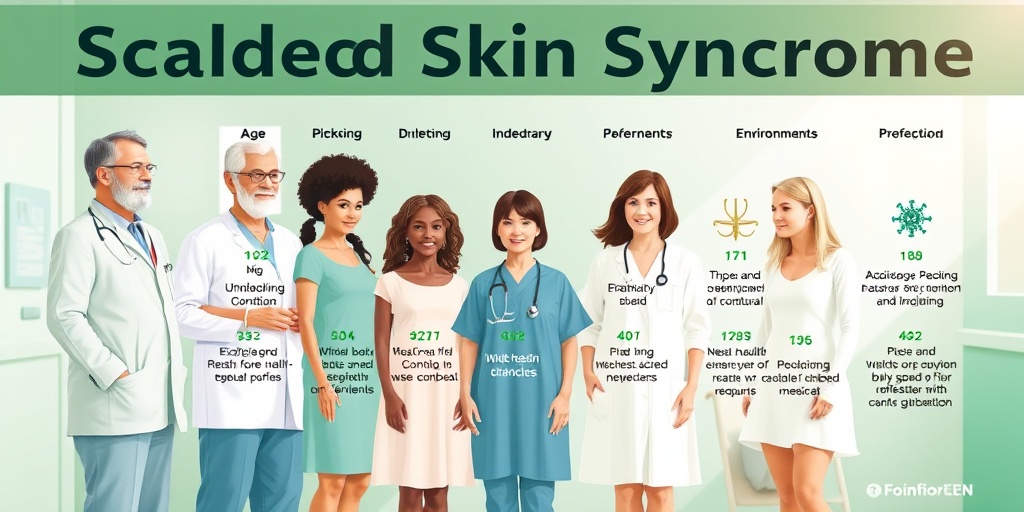
Diagnosis of Scalded Skin Syndrome
Scalded Skin Syndrome (SSS) is a serious condition primarily caused by Staphylococcus aureus bacteria, which produce toxins that lead to skin peeling and blistering. Diagnosing this syndrome promptly is crucial for effective treatment and recovery. Here’s how healthcare professionals typically approach the diagnosis of SSS.
Clinical Evaluation
The first step in diagnosing Scalded Skin Syndrome involves a thorough clinical evaluation. Healthcare providers will look for specific symptoms, including:
- Redness and peeling of the skin: This is often the most noticeable symptom, resembling severe burns.
- Blister formation: Blisters may appear on the skin, which can rupture easily.
- Fever and irritability: Patients, especially infants, may exhibit signs of fever and discomfort.
In infants, the condition can escalate quickly, making early recognition vital. The healthcare provider will also take a detailed medical history to identify any recent infections or skin injuries that could have contributed to the onset of SSS.
Laboratory Tests
While the clinical presentation is often sufficient for diagnosis, laboratory tests can help confirm the presence of the Staphylococcus aureus bacteria. Common tests include:
- Blood cultures: These can identify the bacteria in the bloodstream.
- Skin swabs: Samples taken from the affected areas can be cultured to detect the presence of the bacteria.
- Biopsy: In some cases, a skin biopsy may be performed to rule out other skin conditions.
It’s important to note that Scalded Skin Syndrome can mimic other skin disorders, such as toxic epidermal necrolysis or pemphigus vulgaris. Therefore, a comprehensive evaluation is essential for an accurate diagnosis.
Treatment Options for Scalded Skin Syndrome
Once diagnosed, the treatment of Scalded Skin Syndrome focuses on managing symptoms, preventing complications, and addressing the underlying infection. Here are the primary treatment options available:
Antibiotic Therapy
The cornerstone of treatment for SSS is antibiotic therapy. Since the condition is caused by Staphylococcus aureus, antibiotics are prescribed to eliminate the bacteria. Commonly used antibiotics include:
- Vancomycin: Often the first choice due to its effectiveness against resistant strains of Staphylococcus.
- Clindamycin: This may be used in conjunction with other antibiotics to enhance efficacy.
It’s crucial for healthcare providers to monitor the patient’s response to antibiotics and adjust the treatment plan as necessary.
Supportive Care
In addition to antibiotics, supportive care plays a vital role in the management of Scalded Skin Syndrome. This includes:
- Fluid and electrolyte management: Patients may require intravenous fluids to maintain hydration, especially if they are unable to drink adequately.
- Wound care: Proper care of the affected skin is essential to prevent infection and promote healing. This may involve gentle cleansing and the application of topical ointments.
- Pain management: Analgesics may be prescribed to alleviate discomfort associated with skin peeling and blistering.
Hospitalization
In severe cases, particularly in infants and immunocompromised individuals, hospitalization may be necessary. This allows for closer monitoring and more intensive treatment, including:
- Specialized wound care: Healthcare professionals can provide advanced wound management techniques.
- Isolation precautions: To prevent the spread of infection, patients may be placed in isolation.
Overall, the prognosis for Scalded Skin Syndrome is generally good with prompt diagnosis and appropriate treatment. Early intervention can significantly reduce the risk of complications and promote a quicker recovery. 🌟
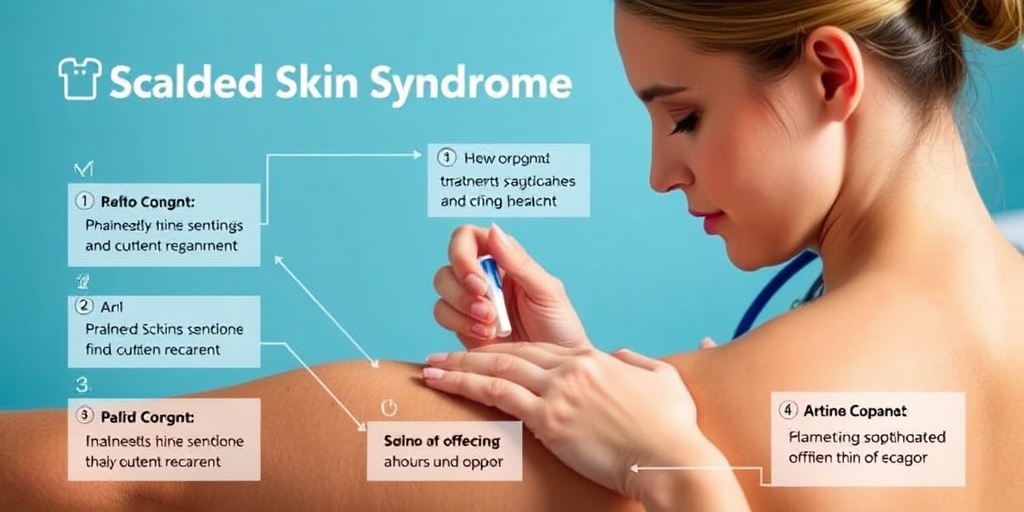
Home Care for Scalded Skin Syndrome
Scalded Skin Syndrome (SSS) is a serious condition that primarily affects infants and young children, although it can occur in adults as well. It is characterized by the peeling of the skin and can lead to significant discomfort and complications if not managed properly. Home care plays a crucial role in the recovery process. Here are some essential tips for managing SSS at home.
Understanding the Condition
Before diving into home care, it’s important to understand what Scalded Skin Syndrome is. This condition is caused by toxins produced by certain strains of Staphylococcus aureus, which can lead to the separation of the outer layer of skin from the underlying layers. Symptoms often include:
- Redness and tenderness of the skin
- Blisters that may burst, leading to peeling
- Fever and irritability in infants
Skin Care Routine
Maintaining a gentle skin care routine is vital for those suffering from SSS. Here are some steps to follow:
- Keep the skin clean: Use mild, fragrance-free soap and lukewarm water to cleanse the affected areas. Avoid scrubbing, as this can irritate the skin further.
- Moisturize regularly: Apply a gentle, hypoallergenic moisturizer to keep the skin hydrated. This can help reduce discomfort and promote healing.
- Protect the skin: Use non-stick dressings or gauze to cover any open areas. This helps prevent infection and protects the skin from further damage.
Managing Pain and Discomfort
Pain management is an essential aspect of home care for Scalded Skin Syndrome. Here are some strategies:
- Over-the-counter pain relief: Consult with a healthcare provider about using acetaminophen or ibuprofen to alleviate pain and reduce fever.
- Cool compresses: Applying cool, damp cloths to the affected areas can provide relief from discomfort and help soothe irritated skin.
Monitoring for Complications
It’s crucial to keep an eye on the condition of the skin and overall health. Watch for signs of complications, such as:
- Increased redness or swelling
- Fever that persists or worsens
- Signs of infection, such as pus or increased pain
If any of these symptoms occur, it’s important to seek medical attention promptly. Early intervention can prevent serious complications.
Preventing Scalded Skin Syndrome
Prevention is always better than cure, especially when it comes to conditions like Scalded Skin Syndrome. While it may not be entirely preventable, there are several strategies that can significantly reduce the risk of developing this condition.
Good Hygiene Practices
Maintaining good hygiene is one of the most effective ways to prevent SSS. Here are some tips:
- Regular handwashing: Encourage frequent handwashing with soap and water, especially before handling infants or young children.
- Keep wounds clean: Any cuts or abrasions should be cleaned and covered promptly to prevent bacterial infections.
Awareness of Risk Factors
Understanding the risk factors associated with Scalded Skin Syndrome can help in prevention:
- Age: Infants and young children are at higher risk due to their delicate skin.
- Existing skin conditions: Conditions like eczema can increase susceptibility to infections.
Vaccination and Health Monitoring
Staying up-to-date with vaccinations can help protect against infections that may lead to SSS. Regular health check-ups are also essential, especially for those with compromised immune systems.
Educating Caregivers
Education is key in preventing Scalded Skin Syndrome. Caregivers should be informed about:
- The signs and symptoms of SSS
- How to maintain proper hygiene
- When to seek medical help
By implementing these preventive measures, the risk of Scalded Skin Syndrome can be significantly reduced, ensuring a healthier environment for infants and vulnerable individuals. 🛡️

Frequently Asked Questions about Scalded Skin Syndrome
What is Scalded Skin Syndrome?
Scalded Skin Syndrome is a serious skin condition primarily caused by toxins produced by certain strains of bacteria, particularly Staphylococcus aureus. It leads to the shedding of the outer layer of skin, resembling burns or scalds.
What are the symptoms of Scalded Skin Syndrome?
- Redness and tenderness of the skin
- Blistering and peeling of the skin
- Fever and irritability
- Crusting of the skin
Who is most at risk for Scalded Skin Syndrome?
This condition is most commonly seen in babies and young children, but it can also affect adults, especially those with weakened immune systems or existing skin conditions.
What causes Scalded Skin Syndrome?
The primary cause of Scalded Skin Syndrome is the production of exfoliative toxins by Staphylococcus aureus. These toxins lead to the separation of the skin layers, resulting in the characteristic symptoms.
How is Scalded Skin Syndrome treated?
Treatment typically involves:
- Antibiotics to combat the bacterial infection
- Supportive care, including fluid replacement
- Topical treatments to manage skin integrity
Are there any pictures of Scalded Skin Syndrome?
Yes, there are many pictures of Scalded Skin Syndrome available online that illustrate the symptoms and severity of the condition. However, please be cautious as some images may be graphic.
Is Scalded Skin Syndrome contagious?
No, Scalded Skin Syndrome itself is not contagious. However, the bacteria that cause it can be spread through direct contact with an infected person or contaminated surfaces.
What is the ICD-10 code for Scalded Skin Syndrome?
The ICD-10 code for Scalded Skin Syndrome is L00.0, which is used for medical billing and documentation purposes.
Can Scalded Skin Syndrome lead to complications?
Yes, if left untreated, Scalded Skin Syndrome can lead to serious complications, including secondary infections, dehydration, and in severe cases, sepsis.
How can I prevent Scalded Skin Syndrome?
While it may not be entirely preventable, maintaining good hygiene, treating skin infections promptly, and ensuring proper care for vulnerable individuals can help reduce the risk.

